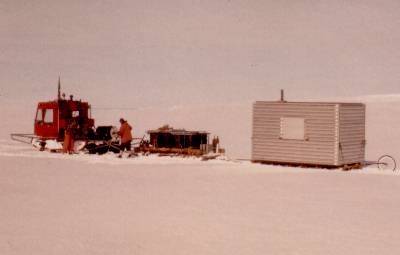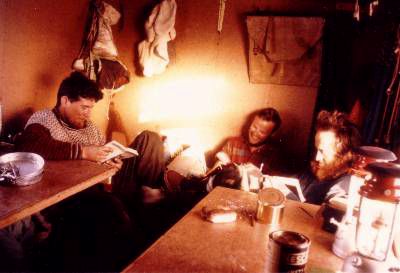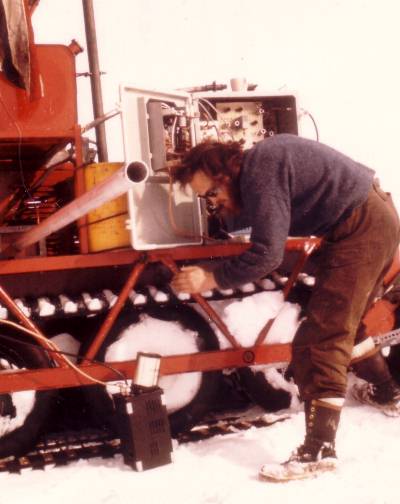Mike, from the Scott Polar Research Institute, Cambridge, was one of the first to successfully measure ice thickness anywhere in Antarctica. This was a forerunner for eventual airborne radar ice thickness measurements. The 1963 work was reported in the prestigious scientific journal Nature the following year (24 Oct 1964, Vol.204, No. 4956, pp317-319). October 1964. At that time the ice shelf at Halley Bay station was moving seaward at 441 metres per year as measured by magnetic anomaly surveys around the base. The 1963 traverses covered about 320 km across the ice shelf and measured ice thicknesses varying from 200 metres down to 90 metres in some of the disturbed ice areas.
The radar equipment was mounted on the Muskeg tractor together with its various transmission and receiver aerial frames. The first towed sledge was used for fuel drums and the caboose was mounted on the second sledge. The caboose was a bit cramped at times but served us well. There was certainly no central heating like Golly's Folly. However, for the 1968 trip to the Shackleton Range perhaps something more "up-market" was warranted.


